Where is Nepal?
About Nepal
The Land
The People
Life and Death
Health, Energy and the Environment
Education and Work
Travel, Communication and the Media






Back to the Flags of Asia page




Nepal is an above average size country in the centre of southern mainland Asia.
Nepal is a landlocked country and has no coastal borders.
The land is a mixture of a flat river plain in the south, a central hilly region and the mountains of the Himalayas in the north.
The geographical coordinates for the centre of Nepal, also known as lines of latitude and longtitude, are:-
Latitude - 28 00N
Longitude - 84 00E
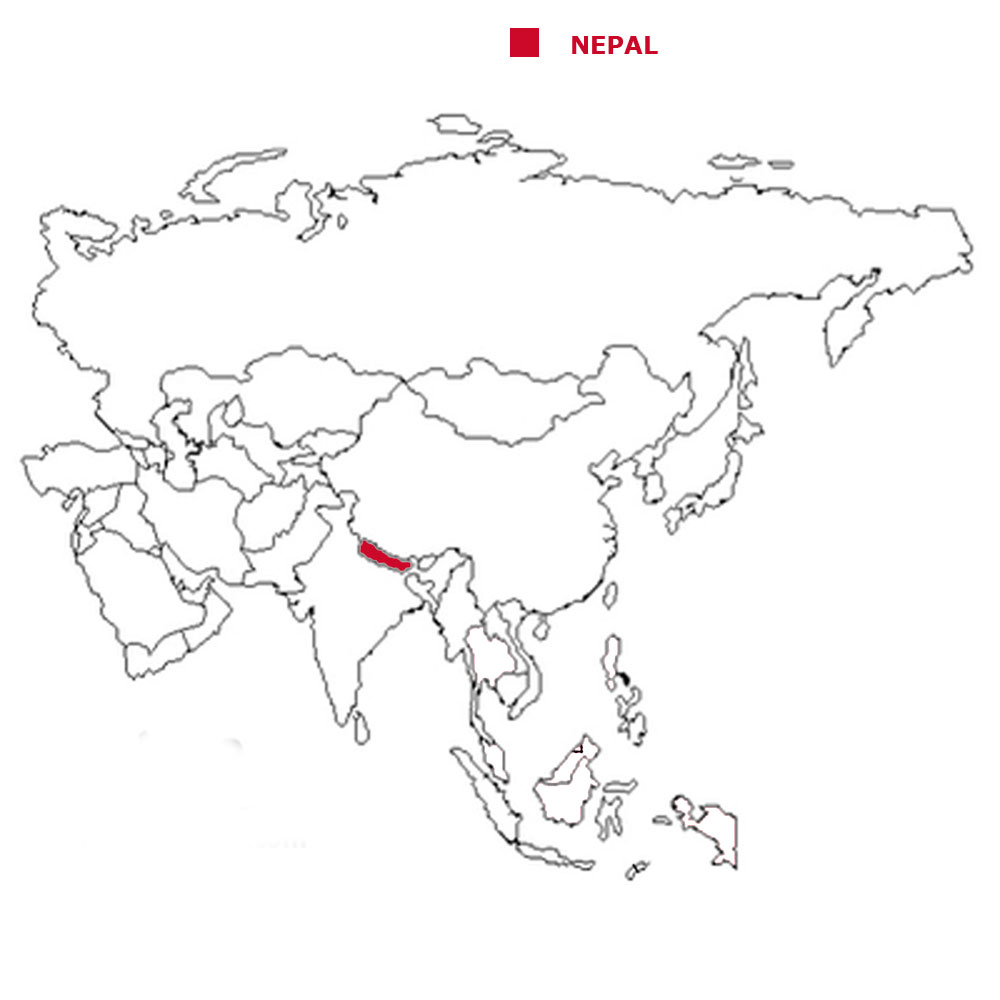

Check the weather in Kathmandu now.
This is the time in Kathmandu now
 The Nepali flag is crimson with a blue border but is
the shape of two overlapping right-angled triangles, virtually on top of each other. The upper triangle displays a white moon while the lower triangle has a white
12-pointed start. Nepal is the only country in the world that does not have a square or rectangular flag.
The Nepali flag is crimson with a blue border but is
the shape of two overlapping right-angled triangles, virtually on top of each other. The upper triangle displays a white moon while the lower triangle has a white
12-pointed start. Nepal is the only country in the world that does not have a square or rectangular flag.
Nepal is a federal parliamentary republic with a president as head of state and a prime minister as head of the government.
In elections everyone over the age of 18 can vote.
The currency in Nepal is the Nepalese rupee.
Nepali is the official language.
Hear the National Anthem
These are the anthem words
We have already written our own history of England but are asking schools in Nepal to provide us with a detailed history of
their own country. Check how here.
![]()
![]() Back to the top
Back to the top

The total land area of Nepal is 143,351 sq kms which is the 27th largest in Asia.
Nepal has lakes, rivers and canals which total 3,830 sq kms.
Nepal has boundaries with 2 countries
- India 1,770 683 kms
- China 1,389 kms
Nepal has no coastline.
The highest point in Nepal is Mount Everest at 8,848 metres.
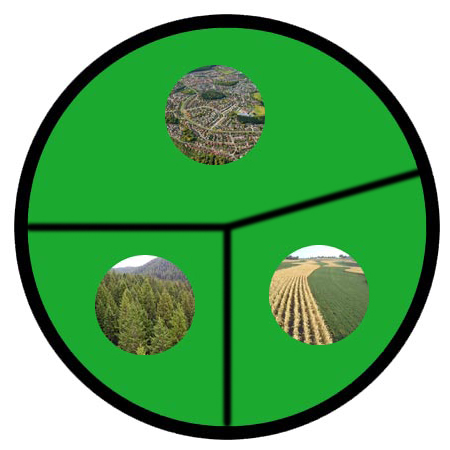

The total population of Nepal is 29.03 million people, making it the 19th largest country in Asia by population.
Of this number 14.90 million are females and 14.13 million are males.
A person from Nepal is called a Nepali.
To be a citizen of Nepal you can simply be born in Nepal or one of your parents is a citizen of Nepal. You have to live in Nepal for
15 years before you can begin to apply for citizenship.
The largest five cities in Nepal, by population are:-
- Kathmandu 1,442,271 people
- Pokhara 200,000
- Patan 183,310
- Biratnagar 182,234
- Birgunj 133,238
 Each little Owlbut is 1 person and
the big yellow rectangle is 1 sq km. After a while you can compare countries and see which ones are the most crowded. Remember it is only an average as
more people live closer together in towns and cities than in villages out in the country.
Each little Owlbut is 1 person and
the big yellow rectangle is 1 sq km. After a while you can compare countries and see which ones are the most crowded. Remember it is only an average as
more people live closer together in towns and cities than in villages out in the country.
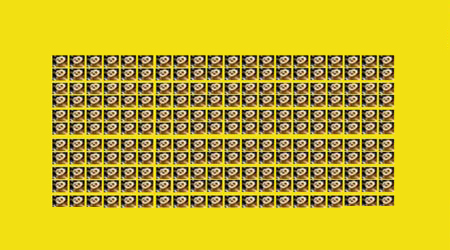
18.6% of the people live in cities or towns.

The birth rate in Nepal is 19.9 births per 1,000 of population
The death rate in Nepal is 5.7 deaths per 1,000 people.
Check this against the birth rate. If the death rate is higher than the birth rate then
the population will decrease unless immigrants arrive in the country.
There are 27.5 deaths of girls under 1 year per 1,000 of births and 30.2 deaths of boys.
The median age for females is 25.3 and for males is 22.8. The median age is that age which divides the population exactly in half so there are the same number
of people above the median age as below it.
The average age of a woman when she has her first child is 20.8.
The elderly dependency ratio is 8.8. This is the number of elderly people (ages 65+) per 100 people of working age (ages 15-64).
The potential support ratio is 11.3. This is the number of working-age people (ages 15-64) per one elderly person (ages 65+). As a population ages, the potential support ratio tends to fall, meaning there are fewer potential workers to support the elderly.
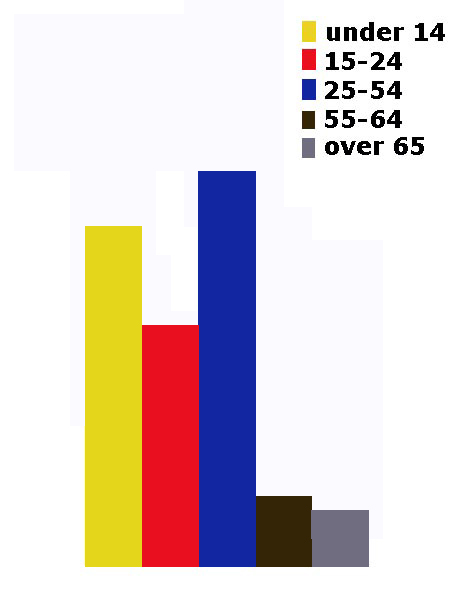
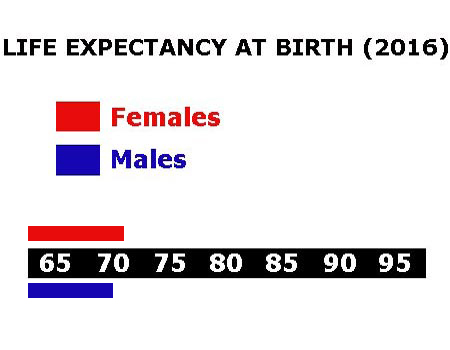

Nepal spends 5.8% of its total income on health care.
There are 0.6 doctors per 1,000 people.
There are 3.0 hospital beds per 1,000 people.
4.1% of the population are estimated as obese.
90.9% of the urban population and 91.8% of the rural population have drinking water that is either piped into their home or they have access to a public tap, a protected borehole, well, spring or
protected rainwater collection facility.
56.0% of the urban population and 43.5% of the rural population have access to a flushing toilet that is connected to a sewer. a pit latrine (that is a
permanent hole in the ground that is looked after) or a composting toilet.
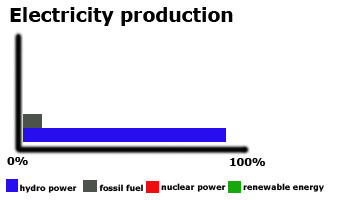
Nepal releases 4.2 million metric tons of carbon dioxide by burning fossil fuels in the process of producing and consuming energy. This puts it as the 46th highest in Asia.

Nepal spends 3.7% of its total income on education.
Children usually start school at age 6 in Nepal. Primary education is for five years until age 11 and secondary education can continue till 18. This may be followed
by further education at a university or college. There is no compulsory education.
Generally the school year consists of 3 terms and starts in the middle of April and finishes in the middle of March. There is usually a 4 week
in June and breaks in October and January.
53.1% of females and 76.4% of males are able to read and write by the age of 15.
3.9% of all people aged between 16 and 24 are not in work. Among females 2.5% are unemployed while with males 4.2% can't find work.
The total number of people available for work in Nepal is 15.6 million.
 They work in the following sectors.
They work in the following sectors.
- Agriculture includes farming, fishing and forestry work
- Industry includes mining, manufacturing, construction and energy workers
- Services is everything else

There are 11 paved airports in Nepal, which is the 37th highest number in Asia.
![]()
There are 53 kilometres of railways in Nepal, the 35th longest in Asia.
![]()
There are 11,890 kilometres of roads in Nepal, which means Nepal is in 30th place for the most kilometres of roads in Asia.
![]()
There are 6 major national newspapers in Nepal.
There are 31.12 million mobile phone users.
3% of the people have a fixed landline.

5.72 million people have access to the internet at home via any device (computer or mobile).


